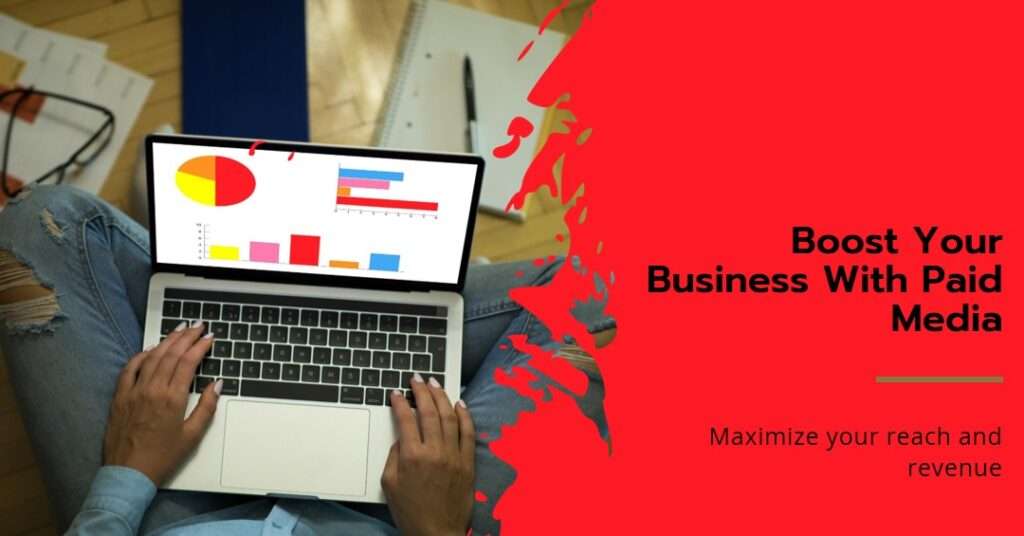
In today’s digital landscape, paid media is a powerful tool for businesses looking to reach a larger audience, increase brand visibility, and drive conversions. Whether you’re new to the concept or looking to refine your strategy, understanding the basics of paid media can help you make informed decisions that benefit your bottom line. In this post, we’ll explore what paid media is, why it’s important, and how you can effectively leverage it to grow your business.
What is Paid Media?
Paid media refers to any form of advertising that you pay for. It includes channels such as pay-per-click (PPC) ads, social media ads, display ads, and sponsored content. Unlike organic media, which relies on search engine optimization (SEO) and content marketing to drive traffic, paid media allows you to quickly place your message in front of a targeted audience.
Why is Paid Media Important?
- Immediate Visibility: Unlike organic content, paid media can provide instant visibility to your target audience. This is crucial for new businesses or when launching a new product or service.
- Targeted Reach: Paid media platforms, like Google Ads or Facebook Ads, offer advanced targeting options that allow you to reach a specific demographic, location, or interest group.
- Measurable Results: Paid media campaigns are highly trackable. You can measure impressions, clicks, conversions, and return on ad spend (ROAS), providing insights that help refine your strategy.
- Scalable Campaigns: You can start with a small budget and scale up based on the results. Paid media is flexible and can be adjusted in real-time, which allows for continuous optimization.
Types of Paid Media
- Search Ads: Appear on search engine results pages (SERPs) when users search for specific keywords. This is a great way to capture demand at the moment of search intent.
- Display Ads: Banner, image, or video ads that appear on websites within a display network. These are effective for retargeting or building brand awareness.
- Social Media Ads: Ads that run on social media platforms like Facebook, Instagram, LinkedIn, and Twitter. They can take various forms, such as sponsored posts, stories, or videos.
- Native Ads: Sponsored content that blends seamlessly with the editorial content of a website or platform. These ads are less intrusive and can provide a more engaging user experience.
- Video Ads: Ads that appear before, during, or after video content. YouTube, for example, is a popular platform for video ads due to its massive user base.
How to Develop an Effective Paid Media Strategy
- Define Your Goals: Start by setting clear, measurable objectives. Do you want to increase website traffic, generate leads, or boost sales? Your goals will guide the rest of your strategy.
- Know Your Audience: Understand who you are trying to reach. Use data and analytics to build detailed customer personas that include demographics, interests, and online behavior.
- Choose the Right Platforms: Select platforms that align with your target audience. For example, if you’re targeting professionals, LinkedIn might be more effective than Instagram.
- Create Compelling Ad Copy and Creative: Your ad’s message and design should resonate with your audience. Use strong calls to action (CTAs) and visuals that grab attention.
- Optimize and Test: Use A/B testing to compare different versions of your ads. Monitor performance metrics and adjust your campaigns based on the data to improve results.
- Allocate Budget Wisely: Determine your budget based on your goals, audience size, and the cost-per-click (CPC) or cost-per-impression (CPM) on each platform. Start with a small budget and increase it as you see results.
Conclusion
Paid media can be a game-changer for businesses looking to expand their digital footprint quickly. By understanding the different types of paid media and developing a clear strategy, you can achieve your marketing goals more efficiently. Remember, the key to success is continuous testing, optimization, and staying updated with the latest trends in digital advertising.
Related Articles
- Amazon Digital Media Marketing: A Comprehensive Guide for Brands
- Difference Between SEO and Digital Marketing: A Comprehensive Guide
- Digital Marketing Ads Design: How to Create Effective Ads that Convert
- Online Trade Marketing: A Comprehensive Guide to Boosting Your Business
- Digital Marketing for Doctors: How to Attract More Patients Online
- Digital Marketing for Dentists: A Comprehensive Guide
- Difference Between Digital Marketing and E-Commerce
- Navigating the Future of Digital Real Estate Marketing: Strategies for Success
- Amazon Digital Marketing: Strategies for Success
- Importance of Digital Marketing for Small Businesses
- The Ultimate Guide to Digital Marketing for Real Estate in 2024
- Maximizing Your Reach with Amazon Digital Display Advertising
- Which Targeting Option is Best for Achieving Brand Awareness?
- The Power of Inbound Marketing for B2B Success
